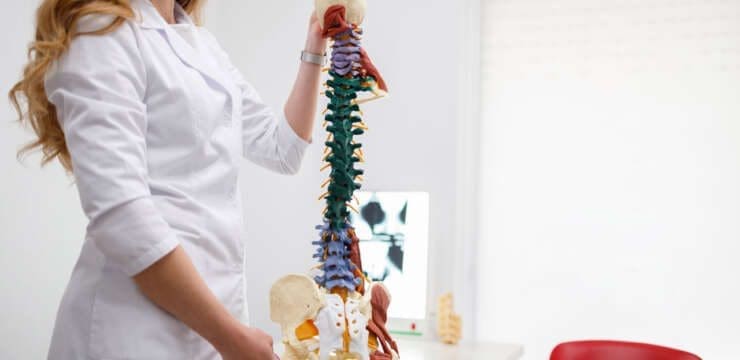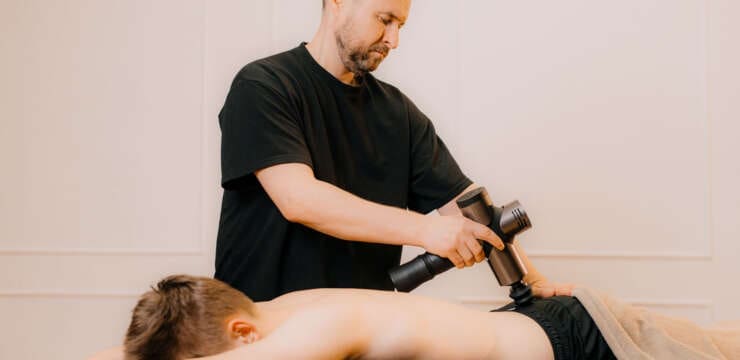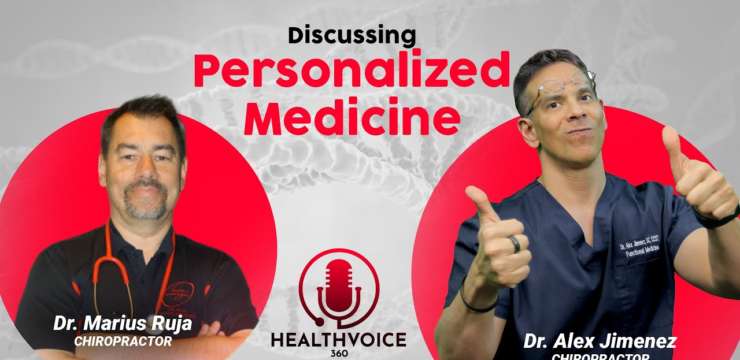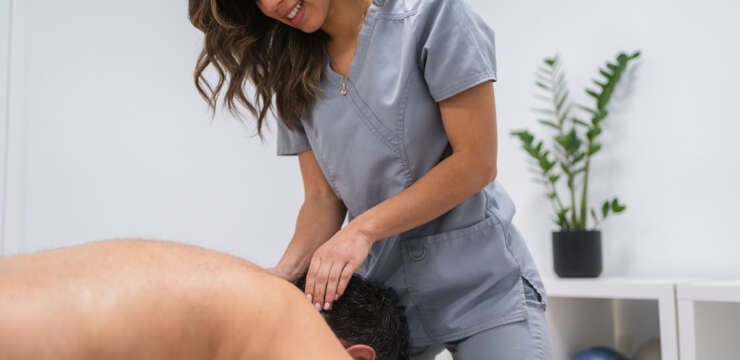
Table of Contents
Maintaining The Spine: A Guide for Strong, Flexible, Pain-Resistant Backs

Definition
Spinal health refers to the proper structure, alignment, and function of your spine, enabling it to support your body, facilitate movement, and protect the spinal cord, which carries nerve signals between your brain and body. You can maintain spinal health with regular exercise, proper posture, a balanced diet, adequate hydration, and a healthy weight. When these are ignored, problems can snowball into chronic pain, nerve irritation or damage, and a lower quality of life (Raleigh Orthopaedics, 2024; Orthopedic Specialists of SW Florida, 2024). (Raleigh Orthopaedic)
Why your spine touches every part of life
- Support & alignment: Your spine is a central pillar that helps distribute load through your hips and legs. When alignment is off, other joints overwork (Premier Spine & Sports Medicine, n.d.). (Premier Spine and Sports Medicine)
- Movement & shock absorption: Curves, discs, and facet joints allow you to bend, twist, and absorb impact, making daily tasks feel easier (Raleigh Orthopaedics, 2024). (Raleigh Orthopaedic)
- Nerve protection: The spinal column shields the spinal cord and the nerves that exit it. Irritation can cause pain, tingling, or weakness (Cary Orthopaedics, 2023). (Cary Orthopaedics)
- Whole-body effects: Ongoing spinal issues may drain energy, disturb sleep, and limit activity if left unaddressed (Raleigh Orthopaedics, 2024). (Raleigh Orthopaedic)
The “CORE” coaching model for spinal health
To keep this simple and coachable, use C-O-R-E:
- C — Consistent movement
- Aim for 20–30 minutes of low-impact cardio most days (walking, cycling, swimming).
- Add core & hip strength (planks, side planks, glute bridges, bird-dogs) 2–3 days/week.
- Layer in mobility after you’re warm (thoracic rotations/open-books, hip-flexor and hamstring stretches).
These habits reduce stiffness, improve circulation, and support the tissues that protect your spine (National Spine Health Foundation, 2024; Mobility Project PT, 2024). (National Spine Health Foundation)
- O — Optimal posture & ergonomics
- Sit: feet flat, hips back, lumbar support, screen at eye level.
- Stand: weight balanced, knees soft, ears over shoulders.
- Reset every 30–45 minutes—micro-breaks beat one long break (National Spine Health Foundation, 2024). (National Spine Health Foundation)
- R — Recovery routines
- Sleep alignment: neutral neck and back with a supportive mattress; side sleepers add a pillow between knees; back sleepers place a small pillow under knees.
- Stress lowers pain tolerance; use 3–5 minutes of slow breathing or a short walk to “downshift” throughout the day (Raleigh Orthopaedics, 2024). (Raleigh Orthopaedic)
- E — Eat & hydrate for tissues
- Protein for muscle/ligament repair; omega-3s for inflammation control; calcium & vitamin D for bone strength; magnesium for muscle/nerve function; colorful produce for antioxidants; water for disc hydration. These nutrition basics support recovery and resilience (Watkins Family Chiropractic, 2023; Orthopedic Specialists of SW Florida, 2024). (Watkins Family Chiropractic)
Common issues you can often prevent
- Strains/sprains & facet irritation from long sitting or poor lifting
- Disc problems that can irritate nearby nerves
- Spinal stenosis (narrowing) that pinches nerves
- Degenerative changes are tied to inactivity, smoking, or excess body weight
Early, conservative action—such as movement, posture resets, and targeted exercises—often helps you recover faster and avoid more invasive care (Orthopedic Specialists of SW Florida, 2024). (SW Florida Orthopedics)
Red flags—get checked soon if you notice these
- Pain that radiates down an arm or leg
- Numbness, weakness, or loss of function
- Night pain, fever, or unexplained weight loss
These signs warrant a prompt examination (Cary Orthopaedics, 2023; Suarez Physical Therapy, n.d.). (Cary Orthopaedics)
The Health-Coach Spine Plan (28 days)
Designed for busy people, this plan uses small daily actions that build momentum:
Week 1 — Start simple
- Daily: 10-minute walk + 5 minutes mobility (open-books, hip-flexor, hamstrings).
- Core set (3×/week): plank 20 s, side plank 15 s/side, glute bridge 10 reps.
- Posture: Raise the screen to eye level; add a small lumbar roll (a towel works).
(Why it works: frequent light movement keeps discs nourished and reduces stiffness.)
(National Spine Health Foundation, 2024). (National Spine Health Foundation)
Week 2 — Build consistency
- Daily: 15–20 minutes walk/cycle + mobility.
- Core set (3×/week): plank 25–30 s, side plank 20 s/side, bridge 12 reps; add bird-dog 6/side.
- Nutrition Nudge: Add leafy greens and lean protein to each meal (Watkins Family Chiropractic, 2023). (Watkins Family Chiropractic)
Week 3 — Strength + recovery
- Cardio most days: 20–25 minutes.
- Hinge practice: lift a backpack/kettlebell 1–2 times a week, focusing on hip hinge and braced core.
- Sleep & stress: pre-bed slow breathing (3–5 minutes).
(Raleigh Orthopaedics, 2024; National Spine Health Foundation, 2024). (Raleigh Orthopaedic)
Week 4 — Re-test & refine
- Repeat Day 1 movements and note any changes in pain, flexibility, and energy.
- Keep what helps; trim what doesn’t.
- If numbness, weakness, or radiating pain persists, book an exam (Cary Orthopaedics, 2023; Suarez Physical Therapy, n.d.). (Cary Orthopaedics)
Work, sport, driving, and travel—coach your environment
- Desk work: timer for posture breaks; elbows near sides; screen at eye level; quick 60-second stand/walk breaks.
- Physical jobs: Rotate tasks when possible; use hip-hinge lifts; take brief mobility breaks to reset.
- Sport: blend mobility + core/hip strength; return to play gradually.
- Driving/travel: seat is close enough for slightly bent knees; headrest is aligned; posture is checked at stops.
(National Spine Health Foundation, 2024; Centeno-Schultz Clinic, n.d.). (National Spine Health Foundation)
What conservative, integrative care looks like (and when to use it)
A successful integrative plan typically combines:
- Chiropractic adjustments to restore motion and reduce joint irritation
- Exercise therapy to strengthen the core/hips and improve mobility
- Manual therapy/massage for tight or sensitive tissues
- Acupuncture when appropriate
- Education on posture, lifting, sleep, and stress strategies
These approaches support symptom relief and long-term function (Prestige Health & Wellness, 2023; Mobility Project PT, 2024; Raleigh Orthopaedics, 2024). (Prestige Health and Wellness)
Clinical lens: dual-scope care in action
(Insights informed by El Paso nurse practitioner & chiropractor Dr. Alexander Jimenez, DC, APRN, FNP-BC)
Why dual-scope matters: Some clinics combine chiropractic skills (joint, disc, and movement focus) with medical assessments (neurology, inflammation, and systemic factors). This helps identify root causes and match the right test to the right patient at the right time. Dr. Jimenez’s platform outlines how advanced imaging techniques (X-ray, CT, MRI, and motion studies) can guide care when red flags or persistent neurological signs appear (Jimenez, n.d.). (El Paso, TX Doctor Of Chiropractic)
Injury care & documentation: For work, sports, personal, and motor-vehicle accidents, thorough history, exam, and imaging when indicated—plus clear medical documentation—support better care decisions and, when needed, legal and insurance processes (Jimenez, 2025a; 2025b; 2025c). (El Paso, TX Doctor Of Chiropractic)
Integrative toolkit: Personalized plans may combine adjustments, exercise therapy, soft-tissue work, acupuncture, and functional medicine strategies to address inflammation and promote healing from multiple angles—along with health coaching to maintain new habits over time (Jimenez, 2021; 2023–2025). (El Paso, TX Doctor Of Chiropractic)
Coach’s tip: Ask your provider which piece you are working on right now (mobility, strength, inflammation, ergonomics, sleep) and how to measure progress this week.
Quick myths vs. facts (coach’s edition)
- “Back pain means rest all day.”
Fact: Gentle movement and short walks often speed recovery; long bed rest can slow it (National Spine Health Foundation, 2024). (National Spine Health Foundation) - “Only heavy lifting causes back pain.”
Fact: Prolonged sitting, poor ergonomics, stress, and low activity also drive pain (National Spine Health Foundation, 2024; Raleigh Orthopaedics, 2024). (National Spine Health Foundation)
The Health-Coach Back Checklist
- ? Break up sitting every 30–45 minutes
- ? Screen at eye level; use lumbar support
- ? 10–15 minutes of core + mobility most days
- ? 20–30 minutes of low-impact cardio most days
- ? Hydrate steadily; build meals around protein + produce + healthy fats
- ? Sleep with neutral neck/back alignment
- ? Practice hip-hinge lifting with the load close
- ? Seek care quickly for red flags or lasting symptoms
Bottom line
You don’t need a perfect routine—you need repeatable habits. Focus on movement, posture, recovery, and nutrition. If pain lingers or nerve signs appear, an integrative, dual-scope team can guide assessment, utilize advanced imaging when appropriate, and tailor a plan that incorporates hands-on care, targeted exercise, and health coaching tailored to your life (Orthopedic Specialists of SW Florida, 2024; Jimenez, 2025a). (SW Florida Orthopedics)
References
- Cary Orthopaedics. (2023, September 7). [Cary Spine Center FAQs]. www.caryortho.com/spine-center/spine-faqs/ (Cary Orthopaedics)
- Centeno-Schultz Clinic. (n.d.). [Thoracic and lumbar spine—All you need to know]. centenoschultz.com/understanding-the-thoracic-and-lumbar-spines/ (Centeno-Schultz Clinic)
- Jimenez, A. (2021). [The functional medicine approach—Our team (El Paso, TX)]. dralexjimenez.com/the-functional-medicine-approach-our-team-el-paso-tx-2021/ (El Paso, TX Doctor Of Chiropractic)
- Jimenez, A. (n.d.). [Imaging diagnostics of abnormalities of the spine]. dralexjimenez.com/imaging-diagnostics-of-abnormalities-of-the-spine/ (El Paso, TX Doctor Of Chiropractic)
- Jimenez, A. (2023). [Spinal imaging—Back pain clinic expectations]. dralexjimenez.com/spinal-imaging-back-pain/ (El Paso, TX Doctor Of Chiropractic)
- Jimenez, A. (2025a). [MVA injuries and their impact on mobility]. dralexjimenez.com/mva-injuries-and-their-impact-on-mobility/ (El Paso, TX Doctor Of Chiropractic)
- Jimenez, A. (2025b). [Auto accident legal support and chiropractic care]. dralexjimenez.com/auto-accident-legal-support-and-chiropractic-care/ (El Paso, TX Doctor Of Chiropractic)
- Jimenez, A. (2025c). [Comprehensive guide to nerve injuries after accidents]. dralexjimenez.com/comprehensive-guide-to-nerve-injuries-after-accidents/ (El Paso, TX Doctor Of Chiropractic)
- Mobility Project Physical Therapy. (2024, September 20). [The importance of spinal health and how to maintain it]. mobilityprojectpt.com/the-importance-of-spinal-health-and-how-to-maintain-it/ (Mobility Project Physical Therapy)
- National Spine Health Foundation. (2024, October 17). [30 tips for spine health prevention & wellness]. spinehealth.org/article/spine-health-wellness/ (National Spine Health Foundation)
- Orthopedic Specialists of Southwest Florida. (2024, June 13; updated August 22). [Spinal health 101: Prevention and treatment of common disorders]. www.osswf.com/spinal-health-101-prevention-and-treatment-of-common-disorders/ (SW Florida Orthopedics)
- Premier Spine & Sports Medicine. (n.d.). [The backbone of wellness: Nurturing your spinal health]. premierspineandsports.com/the-backbone-of-wellness-nurturing-your-spinal-health/ (Premier Spine and Sports Medicine)
- Prestige Health & Wellness. (2023, April 18). [The benefits of spinal care chiropractic for a healthy lifestyle]. www.prestigehealthwellness.com/the-benefits-of-spinal-care-chiropractic-for-a-healthy-lifestyle/ (Prestige Health and Wellness)
- Raleigh Orthopaedics. (2024, August 6). [Why spine health is essential for your overall wellness]. www.raleighortho.com/blog/neck-and-back/why-spine-health-is-essential-for-your-overall-wellness/ (Raleigh Orthopaedic)
- Suarez Physical Therapy. (n.d.). [Low back pain]. www.suarezpt.com/services/symptoms-conditions/low-back-pain (Suarez Physical Therapy)
- Watkins Family Chiropractic. (2023, September 26). [Nutrition and spinal health: The vital connection]. www.watkinsfamilychiropractic.com/nutrition-and-spinal-health-the-vital-connection/ (Watkins Family Chiropractic)
Disclaimers
Professional Scope of Practice *
The information herein on "Maintaining Your Spine: Importance of Alignment" is not intended to replace a one-on-one relationship with a qualified health care professional or licensed physician and is not medical advice. We encourage you to make healthcare decisions based on your research and partnership with a qualified healthcare professional.
Blog Information & Scope Discussions
Welcome to El Paso's wellness blog, where Dr. Alex Jimenez, DC, FNP-C, a board-certified Family Practice Nurse Practitioner (FNP-C) and Chiropractor (DC), presents insights on how our team is dedicated to holistic healing and personalized care. Our practice aligns with evidence-based treatment protocols inspired by integrative medicine principles, similar to those found on dralexjimenez.com, focusing on restoring health naturally for patients of all ages.
Our areas of chiropractic practice include Wellness & Nutrition, Chronic Pain, Personal Injury, Auto Accident Care, Work Injuries, Back Injury, Low Back Pain, Neck Pain, Migraine Headaches, Sports Injuries, Severe Sciatica, Scoliosis, Complex Herniated Discs, Fibromyalgia, Chronic Pain, Complex Injuries, Stress Management, Functional Medicine Treatments, and in-scope care protocols.
Our information scope is limited to chiropractic, musculoskeletal, physical medicine, wellness, contributing etiological viscerosomatic disturbances within clinical presentations, associated somato-visceral reflex clinical dynamics, subluxation complexes, sensitive health issues, and functional medicine articles, topics, and discussions.
We provide and present clinical collaboration with specialists from various disciplines. Each specialist is governed by their professional scope of practice and their jurisdiction of licensure. We use functional health & wellness protocols to treat and support care for the injuries or disorders of the musculoskeletal system.
Our videos, posts, topics, subjects, and insights cover clinical matters, issues, and topics that relate to and directly or indirectly support our clinical scope of practice.*
Our office has reasonably attempted to provide supportive citations and has identified the relevant research studies or studies supporting our posts. We provide copies of supporting research studies available to regulatory boards and the public upon request.
We understand that we cover matters that require an additional explanation of how they may assist in a particular care plan or treatment protocol; therefore, to discuss the subject matter above further, please feel free to ask Dr. Alex Jimenez, DC, APRN, FNP-BC, or contact us at 915-850-0900.
We are here to help you and your family.
Blessings
Dr. Alex Jimenez DC, MSACP, APRN, FNP-BC*, CCST, IFMCP, CFMP, ATN
email: coach@elpasofunctionalmedicine.com
Licensed as a Doctor of Chiropractic (DC) in Texas & New Mexico*
Texas DC License # TX5807
New Mexico DC License # NM-DC2182
Licensed as a Registered Nurse (RN*) in Texas & Multistate
Texas RN License # 1191402
ANCC FNP-BC: Board Certified Nurse Practitioner*
Compact Status: Multi-State License: Authorized to Practice in 40 States*
Graduate with Honors: ICHS: MSN-FNP (Family Nurse Practitioner Program)
Degree Granted. Master's in Family Practice MSN Diploma (Cum Laude)
Dr. Alex Jimenez, DC, APRN, FNP-BC*, CFMP, IFMCP, ATN, CCST
My Digital Business Card






